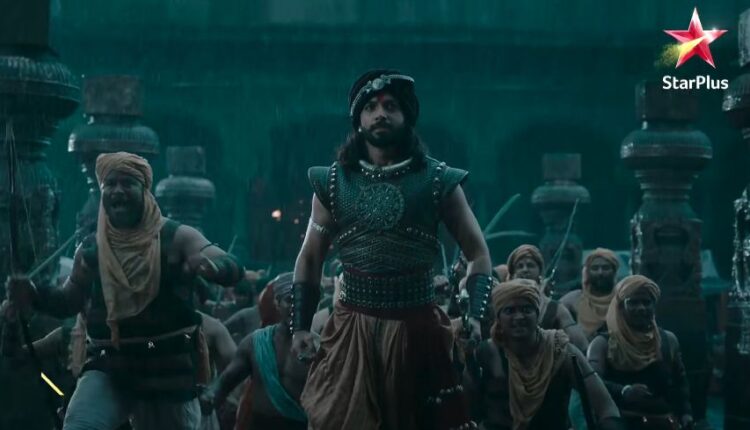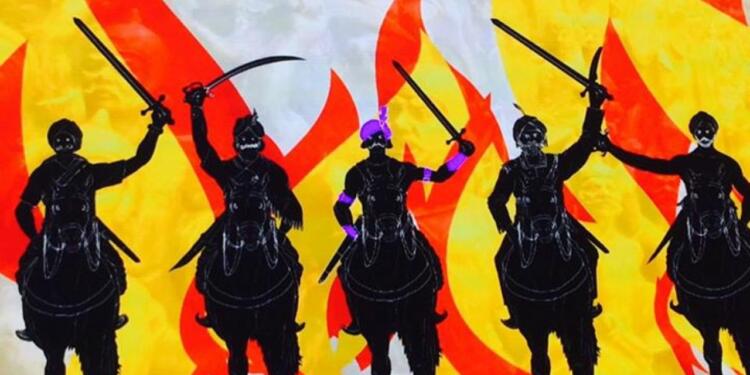Indian history books used in schools and at the university level have a peculiar problem – most of them are not in touch with the realities faced by forefathers of our great nation. The recognition of the 1857 revolt as the first war of independence completely hid another massive armed revolt against the British forces that took place nearly 40 years before 1857 – Paika revolution. The history of Paika rebellion, which revolves around the legendary Buxi Jagabandhu, was buried by Marxist historians from Indian history books. But now as the awareness about it spreads, Indians will witness its glory in the form of a TV series.
Indians will witness the story Buxi Jagabandhu
StarPlus recently released a trailer of its new series titled ‘Vidrohi’, which is based on the life of Buxi Jagabandhu Bidyadhar Mohapatra Bhramarbar Ray – leader of the historic Paika revolt of 1817 in Odisha’s Khurda. The trailer shows how Buxi and his men freed Shree Jagannath Temple, the symbol of Odia unity, from the clutches of British forces.

Buxi Jagabandhu or Paikali Khandayat Buxi, was the commander (Buxi) of the forces of the king of Khurda – Mukund Deva II. His family was provided with Jagirs (grants of lands and other requisites) and the estate of ‘Killa Roranga’ for generations, by Mukund Deva II. As the British captured Khurda in 1803, Buxi Jagabandhu refused to serve their army. In retaliation, his familial estate of Killa Roranga was taken away by the Britishers and Buxi, who was a respected personality in Khurda second only to the king, emerged as the natural leader of the revolt movement.
After Mukund Deva II was captured by the British East India Company, heavy social, political, and economic sanctions were imposed on the people, as well as on the administrative class; Paikas – the traditional dominant group in Odisha, were selectively targeted by British policies. Walter Eve, while investigating the causes of rebellion described how British deliberately subversed the Paikas and deprived them of their former Jagir lands. He wrote– ” In order to break their poisonous teeth, the [Colonial Police Force] must be highly alert to keep the Paikas under their control for a pretty long period, unless the Paika community is ruined completely [Company rule] cannot run smoothly”.
The revolt and its place in history
In March 1817, 400 Kandhas – another tribal group of Odisha, entered into Khurda from the state of Ghumsur, in an act of rebellion against the Company rule. They were joined by Paikas under the leadership of Buxi Jagdambhu, who went ahead with looting and setting fire to British administration buildings, in their attempt to reclaim Khurda.
Also read: The Peshwa Bajirao, Marxist historians don’t want you to know about
The British forces later quickly retook Khurda’s control, but they had lost the strategically important Puri, thanks Buxi’s onslaught. Buxi’s tactics also resulted in Cuttack losing connection from the rebel-held areas of Odisha. However, due to lack of proper arms and organizational support, the revolt was eventually suppressed by the British forces within 3 months. Buxi however, continued to indulge in small guerrilla warfares for 8 more years, until he was captured in 1825. He died a custodial death in 1829.
Attempts to revive Paika revolution’s history
Recently, there have been some significant attempts to revive the history of the Paika revolution. In 2017, Prakash Javadekar, the then Union Minister for Human Resource Development, gave his assurance to mark the Paika revolt as the first war of independence. In 2019, the President of India – Ramnath Kovind, laid the foundation stone for the Paika Rebellion Memorial, on 7 December, 2019. The memorial is currently being built over ten acres of land near Barunei Hills, by the Union Ministry of Culture. In August this year, G. Kishan Reddy, the Union Minister for Culture and Tourism, announced the centre’s intention to declare ‘Paika Bidroha’ as the first war of independence.
The Paika rebellion was a huge and historically important rebellion that led to an overhaul of the British administrative structure in Odisha. It also played a major role in inspiring the subsequent generations to take arms against the British forces. The TV series by StarPlus on Buxi Jagabandhu is a great start towards recognising the efforts of forgotten heroes of our past.



































Decades of misinformation and fake history is taught to Indian public under leftists, communists rule in the education curriculum by fake historians and it’s time we undo these great damages and teach real history.